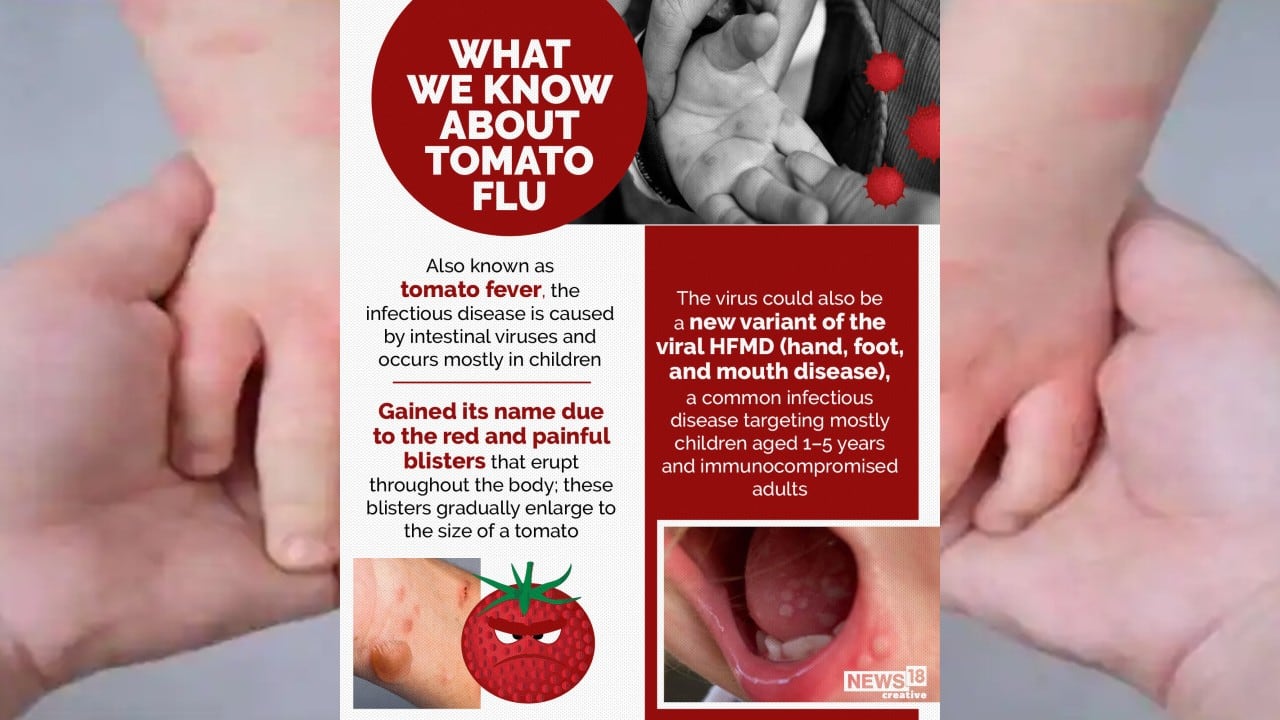Tomato flu
Source: the IndianExpress
Context:
- As cases of tomato flu were reported from Kerala, Tamil Nadu, Haryana, and Odisha, the Health Ministry on Tuesday issued guidelines on prevention, testing, and treatment.
- According to some reports, tomato flu could be an aftereffect of chikungunya or dengue fever in children.
- It could also be a new variant of the viral hand, foot and mouth disease, a common infectious disease targeting mostly children aged 1-5 years, which is immunocompromised adults.
- India recorded around 100 cases of tomato flu which is a highly contagious yet non-life threatening virus.
HFMD:
- Tomato flu is characterized by fever, joint pain, and red tomato-like rashes which are usually seen in children 10 years of age and less.
- Researches believe that these symptoms could be of a hand, foot and mouth disease caused by enteroviruses-virus that are transmitted through the intestine.
- The current HFMD cases are mainly caused by the enterovirus Coxsackievirus A-6, A-16.
- Another pathogen, Enterovirus 71, which causes a disease that is not prevalent now.
- Specific origin, type or cause of the infection is not mentioned.
Tomato Flu :
- As far its etymology is concerned, the tomato flu is so named because of the eruption of red & painful blisters throughout the body that gradually enlarge to the size of a tomato.
- Medical experts took strong exception to this, saying that the usage of such terms is unscientific & misleading.
- It was also clarified that infection is not related to the consumption of tomatoes in any way.

Spreading :
- As the disease is self-limiting, doctors do not usually test for it.
- There are so many viral infections in children and there is no need to test for each & every one.
- More viral infections were reported because testing for viral infections has increased over the last five years.
- The pandemic gave a further push to such surveillance.
- Another explanation could be that schools have re-opened fully after the pandemic.
Clinical Presentation :
- The Ministry clarified that the virus causing tomato flu is not related to SARS-CoV-2, monkeypox, dengue or chikungunya despite symptoms similar to those in viral infections.
- In a small number of cases, tomato flu can lead to CNS(Central Nervous System) complications.
- The disease in this outbreak has some atypical presentations: the red tomato rashes, traditionally restricted to the mouth, palms, and soles are now being reported on the buttocks and shedding of nails is also observed.
- The rashes can be distinguished from that of Monkeypox by a visual inspection monkeypox rashes are more deep-rooted and distribution is also different.
- HFMD can be diagnosed by observing the symptoms, especially the red rashes.
- Infants and young children are also prone to this infection through the use of Napier’s, touching unclean surfaces as well as putting things directly into the mouth.
- The illness usually begins with a mild fever, poor appetite, malaise, and sore throat.
- Small red blisters appear one or two days after the fever and these sores are usually located on the tongue, gums, inside of cheeks, palms, and soles.
- In some cases, fatigue, nausea, vomiting, diarrhoea, dehydration, swelling of joints, body aches & common influenza-like symptoms were noted.
Treatment & Prevention :
- No specific treatment or vaccine is available for the disease.
- Those with the infection are treated symptomatically, like a prescription of paracetamol for fever.
- As per the advisory, anyone suspected to have the infection should remain in isolation for 5-7 days after the onset of symptoms.
- Children must be educated about the infection and asked not to hug or touch the children with fever or rashes.
- They should be encouraged to maintain hygiene, not suck their thumb, and fingers & use a handkerchief for running nose.
- Infected children should be isolated, and their utensils, clothing and bedding must be regularly sanitized.
- They must be kept hydrated, and blisters must be cleaned using warm water.




